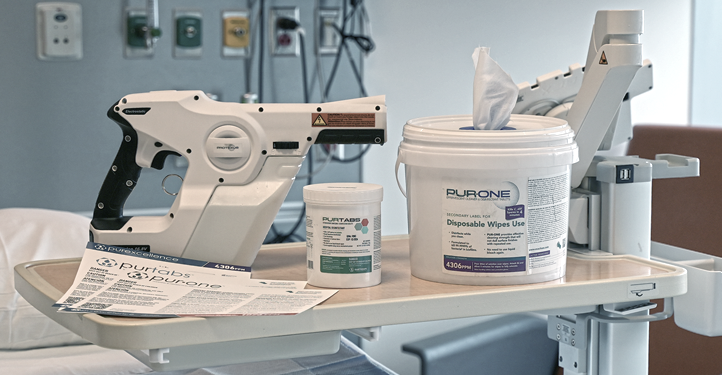News & Events
December 2, 2021 | Newsletter
Infection Control and Sanitation News to Use
Welcome to the December edition of EvaClean Insights. Your source for all things infection prevention.
This year, there have already been more Covid deaths in the U.S. than in 2020. With omicron spreading at a rate not seen with previous variants, experts foresee the country being hit by a massive wave of infections in January. The EvaClean Team is dedicated to ensuring 2022 predictions don’t come true. Our mission is to provide the most effective disinfection solution against SARS-CoV-2, as well as worse pathogens that are emerging and re-emerging every day.
Emerging Viral Pathogen Claims Explained
The EvaClean Q&A Column is where interviews with industry thought leaders provide insights on important infection prevention issues. This month features Part 2 in a series with chemist and environmental microbiology scientist, Mark Hodgson, LRSC, CMIP of Kersia Medical, an authority on disinfectant chemistries who has been published extensively in infection prevention journals. He explains the qualification criteria for an EPA Emerging Viral Pathogen claim and why the powerful NaDCC chemistry in EvaClean PurTabs and PurOne has earned the highest level claim possible.
EC: What is an Emerging Viral Pathogen claim?
MH: The EPA introduced the Emerging Viral Pathogen (EVP) claim when they realized there were no registered products with efficacy claims against infectious diseases and pathogens that are capable of causing an epidemic. The basic principle follows the Spaulding scale, recognizing that a disinfectant effective against one type of virus is likely to be effective against similar viruses or those that are easier to kill. Broadly classified, non-enveloped viruses and small viruses (<50 nm) are harder to kill than enveloped viruses and large viruses (50 to 100 nm). For example, Norovirus and Poliovirus are small non-enveloped viruses that are harder to kill than Human Immunodeficiency virus or Hepatitis B, which are large enveloped viruses.
In order to make a claim against EVPs, a chemical must be a broad spectrum hospital grade disinfectant with existing EPA registered claims for efficacy against other viruses in the following classes:
- 2a Enveloped viruses Class - EPA approved to inactivate at least one large or one small non-enveloped virus to be eligible for use against an enveloped emerging viral pathogen.
- 2b Large non-enveloped viruses Class - EPA approved to inactivate at least one small, non-enveloped virus to be eligible for use against a large, non-enveloped emerging viral pathogen.
- 2c Small non-enveloped viruses Class - EPA approved to inactivate at least two small, non-enveloped viruses, each from a different viral family to be eligible for use against a small, non-enveloped emerging viral pathogen.
EC: What level EVP claim do NaDCC disinfectants have?
MH: EVP claims came to the fore during COVID-19. SARS-CoV-2, the cause of COVID-19, is an enveloped virus, which is considered easy to kill. Thus the reason there were hundreds of products on EPA List N. However, many
did not have an EVP claim, which means they might not be effective in future epidemics with more challenging pathogens. Therefore, only chemistries with the highest level Class 2c EVP claim are considered effective.
NaDCC is one such chemistry. It not only meets but, exceeds the highest level 2c requirements by inactivating four different small non-enveloped viruses: Norovirus, Poliovirus, Hepatitis A virus, and Coxsackievirus.
EC: What about EVPs in Biofilms?
MH: Biofilms are also a key EVP consideration. Recent research showed that many viruses, including COVID-19, colonize in surface biofilm and the vast majority of disinfectants are either less effective or completely ineffective at killing them. Thus, the only way to fully address the risk of fomite transmission is to use disinfectants with a biofilm claim, of which there are very few. NaDCC is one. In fact, it was the first chemistry to receive EPA registration against pathogens in biofilm.
Look for the next installment of this Q & A series in upcoming editions of EvaClean Insights.
For more information on EvaClean’s disinfectants visit https://evaclean.com/products
The Value of Partnering to Prevent Infections in Healthcare
EvaClean is proud to share this educational article authored by our own Gabriella Cimarelli, Director of Account Development. Originally written for our life science partners at MassBio, the piece provides meaningful information, as well as conveys a very important message—“In the quest for infection prevention, safety is always the first consideration.”
